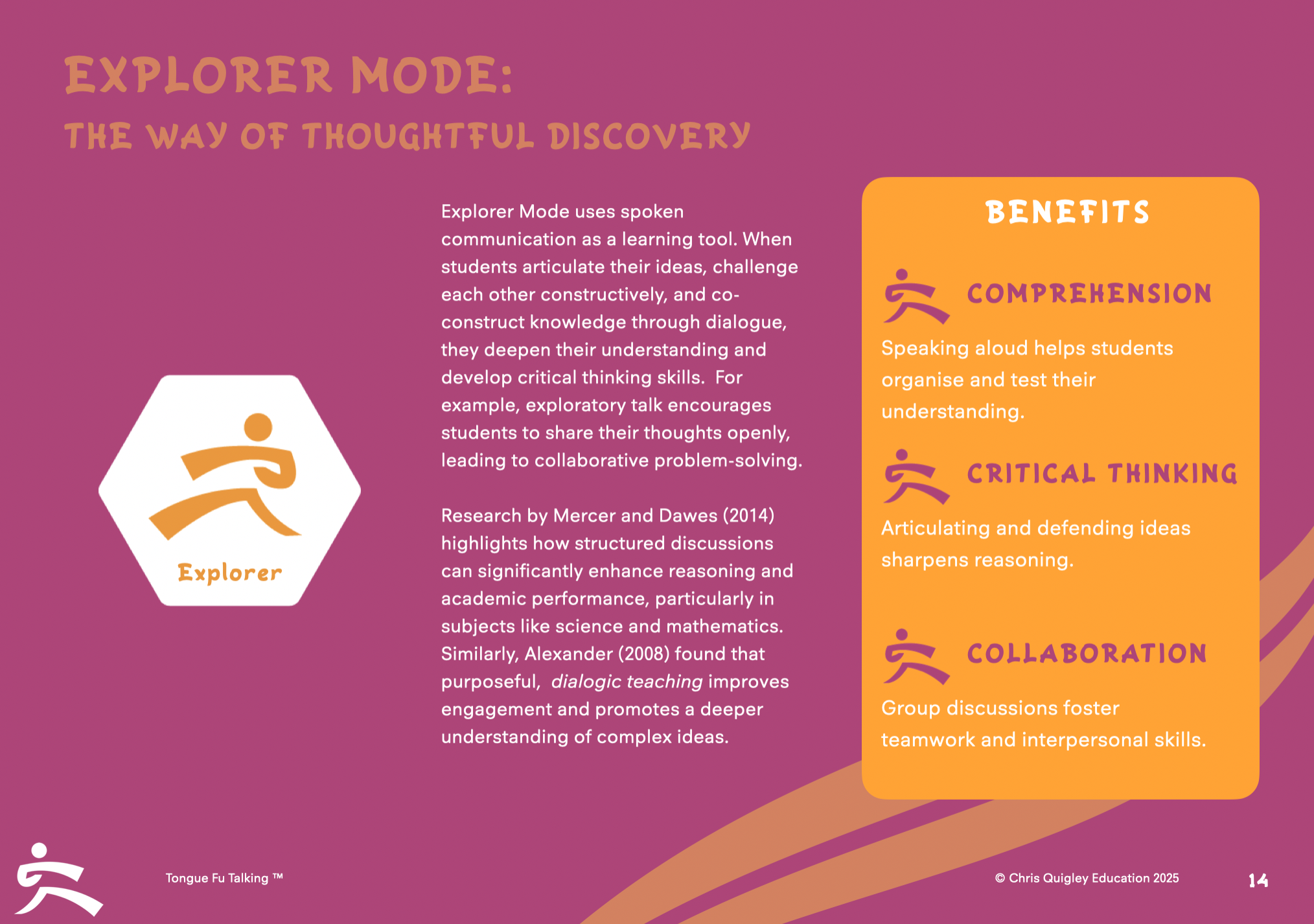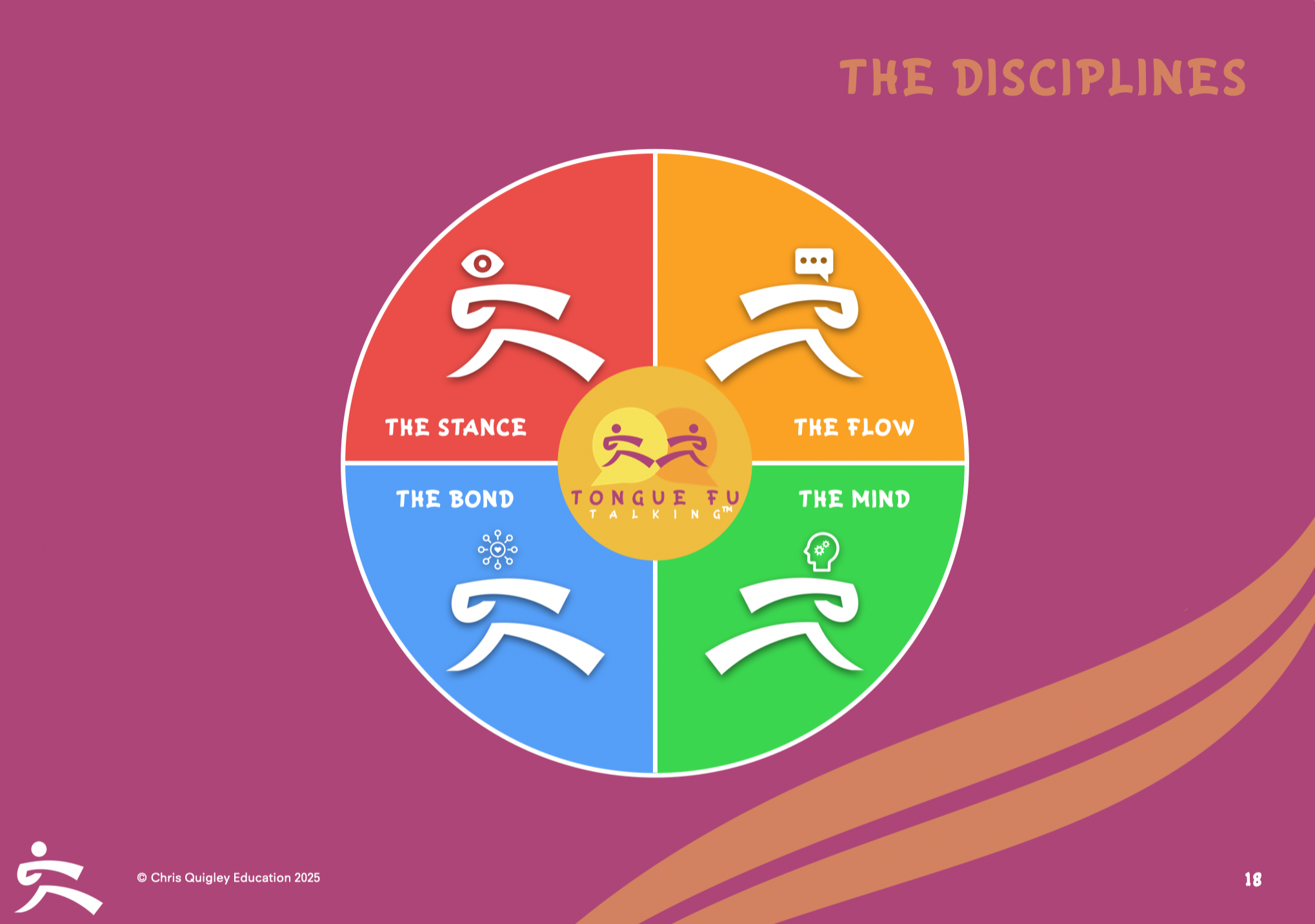
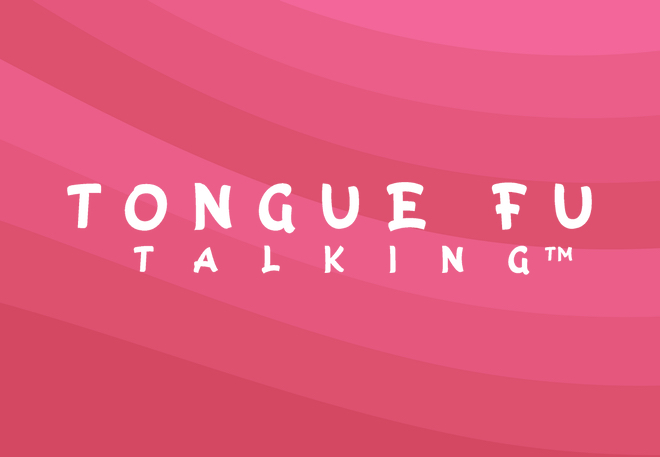
What Is Oracy?
Oracy is the disciplined art of speaking and listening—where thinking, language, expression, and collaboration come together to shape understanding and communication. It includes both verbal and non-verbal elements and spans a variety of interactions, from formal presentations to collaborative discussions.
It is a vital skill that supports thinking, reasoning, collaboration, and self-expression across the curriculum. Yet while oracy is widely recognised as important, it is often underdeveloped in schools due to a lack of structure, progression models, and clarity on how to teach it.
https://tonguefutalking.chrisquigley.co.uk/

Why Oracy Matters
Research shows that high-quality classroom talk improves academic outcomes, critical thinking, and social development (Alexander, 2020; Mercer et al., 2019). The Education Endowment Foundation (EEF, 2021) found that explicitly teaching oracy has a positive impact on pupils' attainment, particularly for those from disadvantaged backgrounds.
Spoken language is also a key component of the National Curriculum in England. Yet teachers often face three key challenges:
-
No clear progression model from EYFS to KS3
-
Limited guidance on how to teach talk explicitly
-
Difficulty assessing oracy in meaningful, observable ways
Tongue Fu Talking™ was developed to meet these challenges.
Introducing Tongue Fu Talking™
Tongue Fu Talking™ is a structured oracy framework that supports both exploratory talk (used for reasoning and learning) and presentational talk (used for informing, persuading, or performing).
It includes:
-
Two Modes of Talk: Explorer Mode and Presenter Mode
-
Four Disciplines of oracy: The Stance, The Flow, The Mind, and The Bond
-
23 Teachable Practices aligned to these disciplines
-
A Belt-Based Progression System from EYFS to KS3
-
Fully resourced CPD, assessment, sentence stems, and visual aids
Two Modes of Talk
Explorer Mode focuses on deepening understanding through discussion, reasoning, and collaborative inquiry.
-
Used in subjects like Science, RE, History, and English
-
Supports metacognitive development and critical thinking
Presenter Mode builds pupils' confidence, clarity, and control when speaking to an audience.
-
Used in assemblies, performances, presentations, and debates
-
Supports structured expression and purposeful communication
See Explorer and Presenter Mode in action on Tongue Fu Talking™
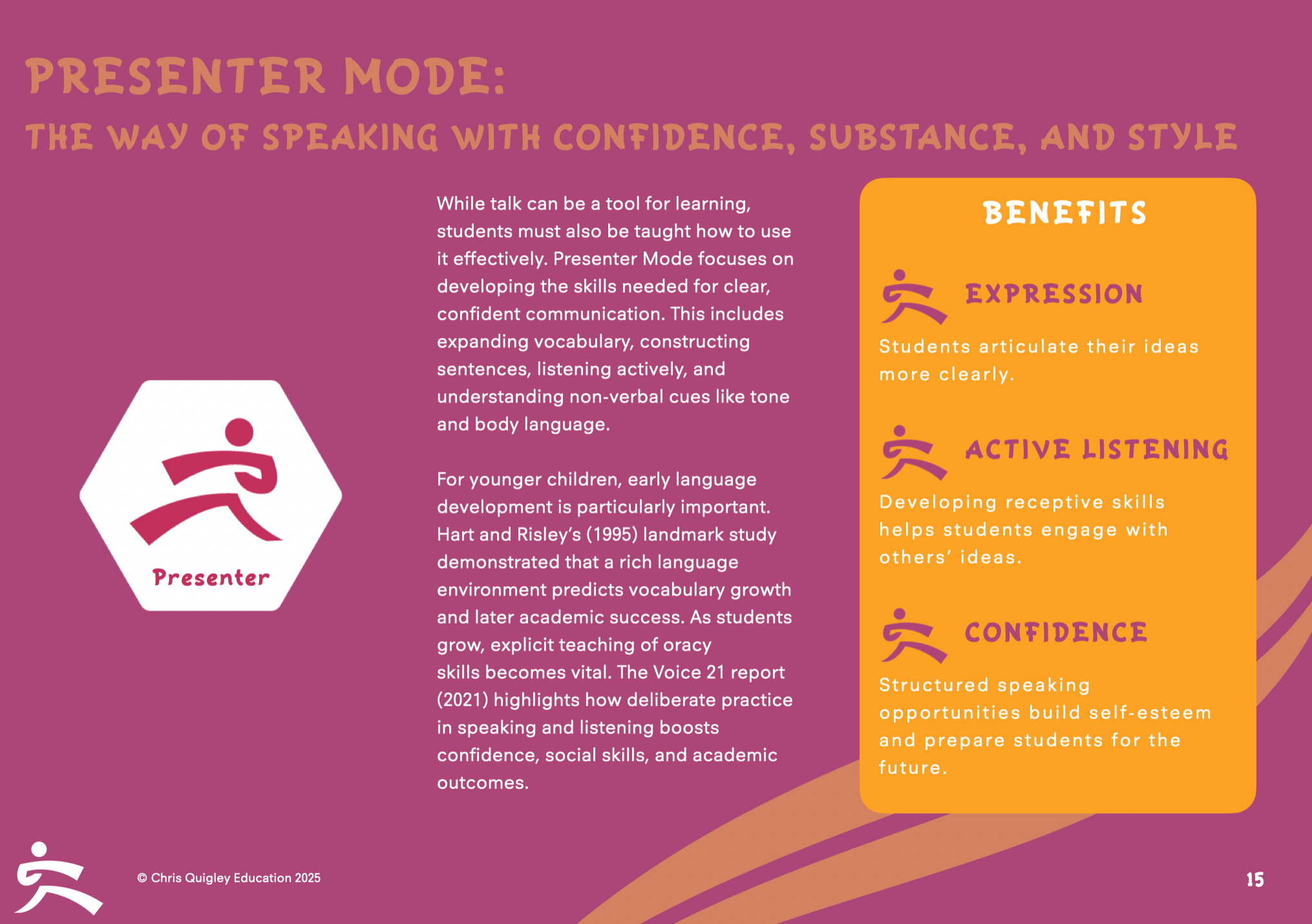
The Four Disciplines of Talk
Tongue Fu Talking™ breaks down oracy into four clearly defined disciplines, each containing specific practices:
-
The Stance: Physical presence, including posture, gesture, and facial expression
-
The Flow: Linguistic fluency, including vocabulary, sentence structure, and rhetorical flair
-
The Mind: Thinking and metacognition, including reasoning, summarising, and self-monitoring
-
The Bond: Social and emotional connection, including audience awareness and collaboration
Each discipline is supported by practical, teachable strategies.
23 Teachable Practices
Teachers are provided with a toolkit of 23 practices that can be taught, modelled, and practised over time. Examples include:
-
Pacing and projection (The Stance)
-
Sentence structure and rhetorical flair (The Flow)
-
Reasoning with justification and summarising (The Mind)
-
Turn-taking, audience awareness, and self-assuredness (The Bond)
These practices make oracy teachable, observable, and assessable.
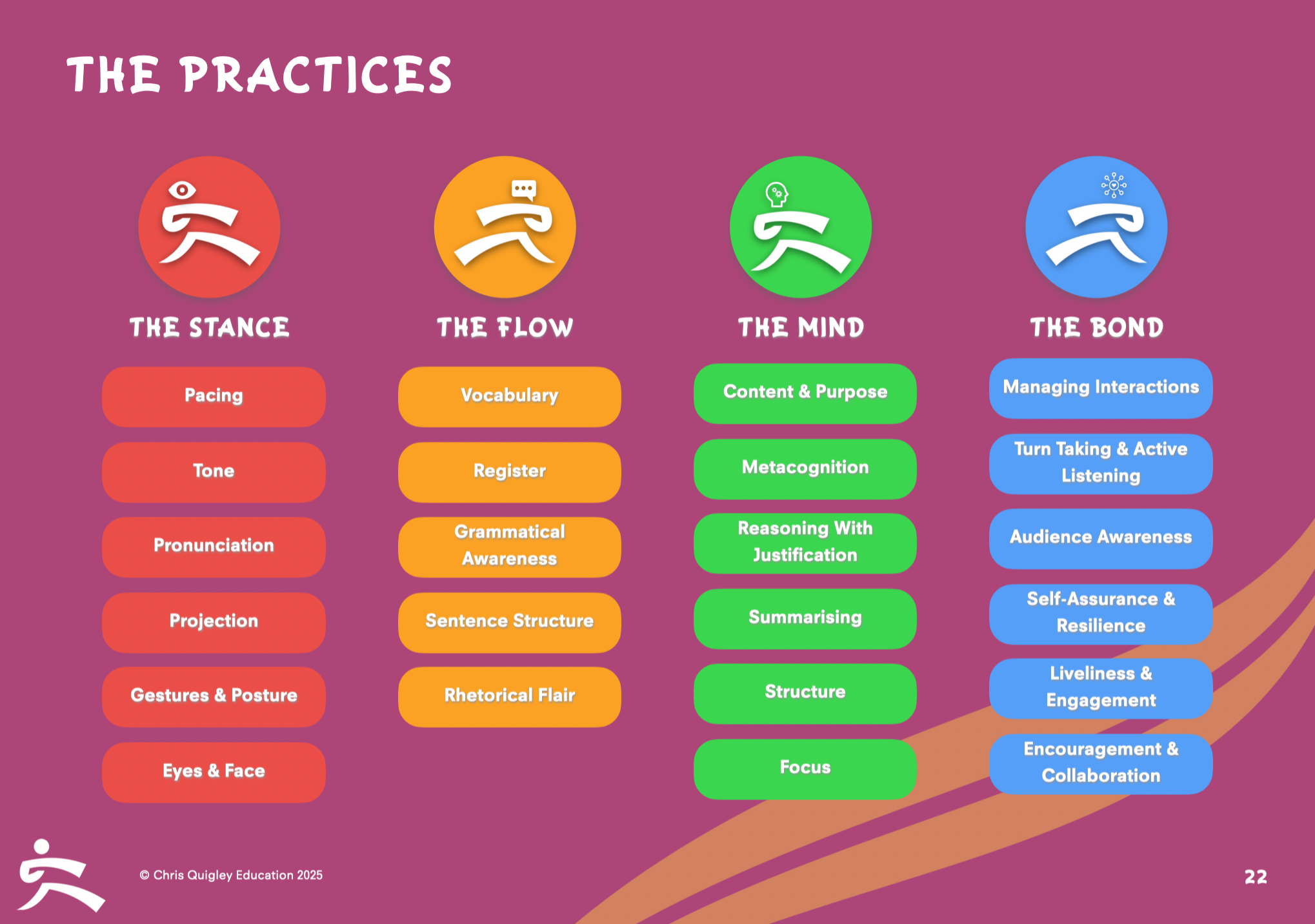
Belt-Based Progression: EYFS to KS3
Progression in Tongue Fu Talking™ is structured through a belt system inspired by martial arts, making development visible, motivational, and clear.
-
White Belt: EYFS & KS1 – early communication, listening, basic sentence use
-
Green Belt: KS1 to Lower KS2 – developing sentence variation, turn-taking, early reasoning
-
Brown Belt: Lower to Upper KS2 – structured argument, confident presentation, deeper metacognition
-
Black Belt: Upper KS2 to KS3 – fluent reasoning, rhetorical technique, strategic use of talk
Each belt includes milestones for every discipline and practice.
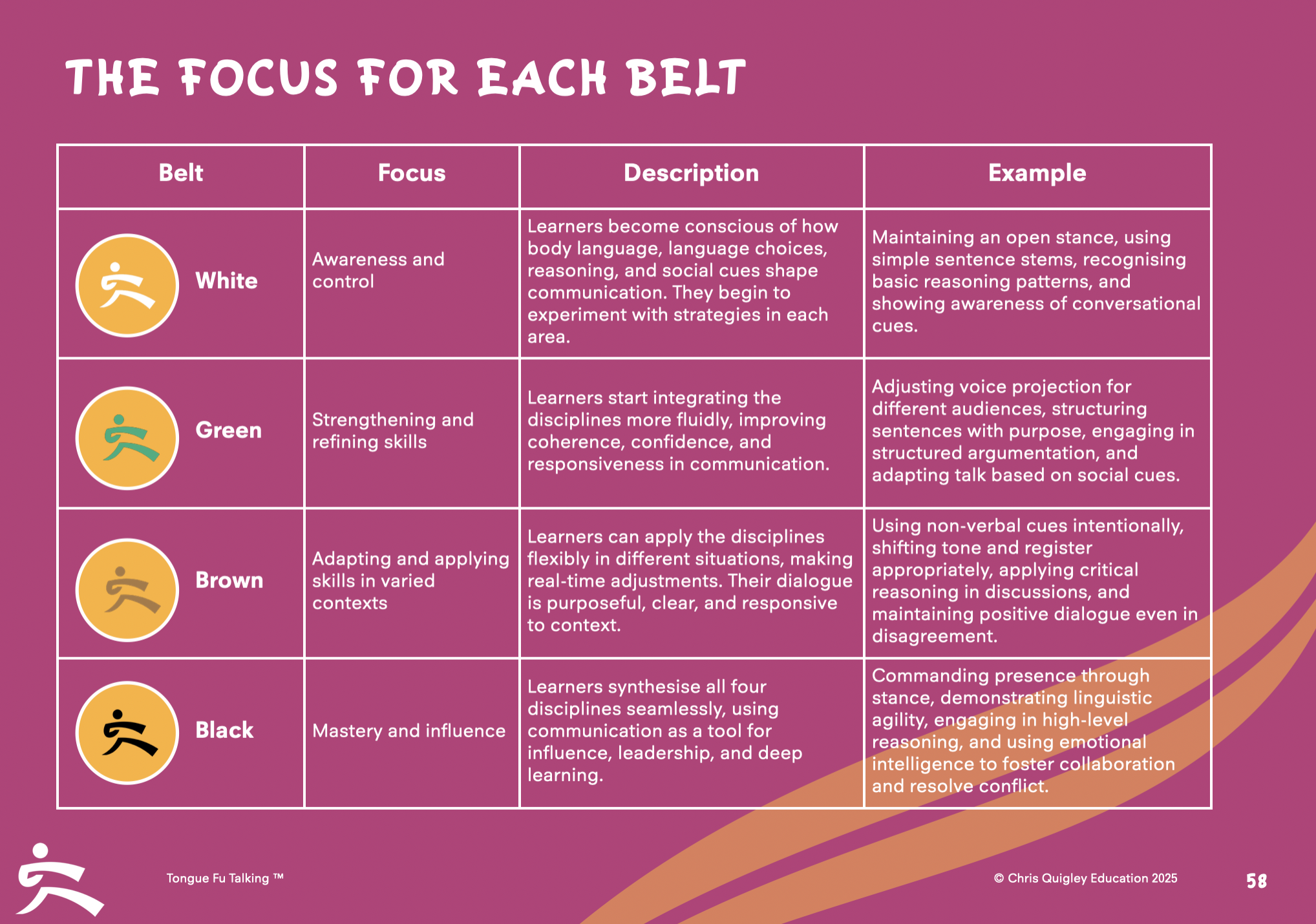
A Structured, Progressive Oracy Framework
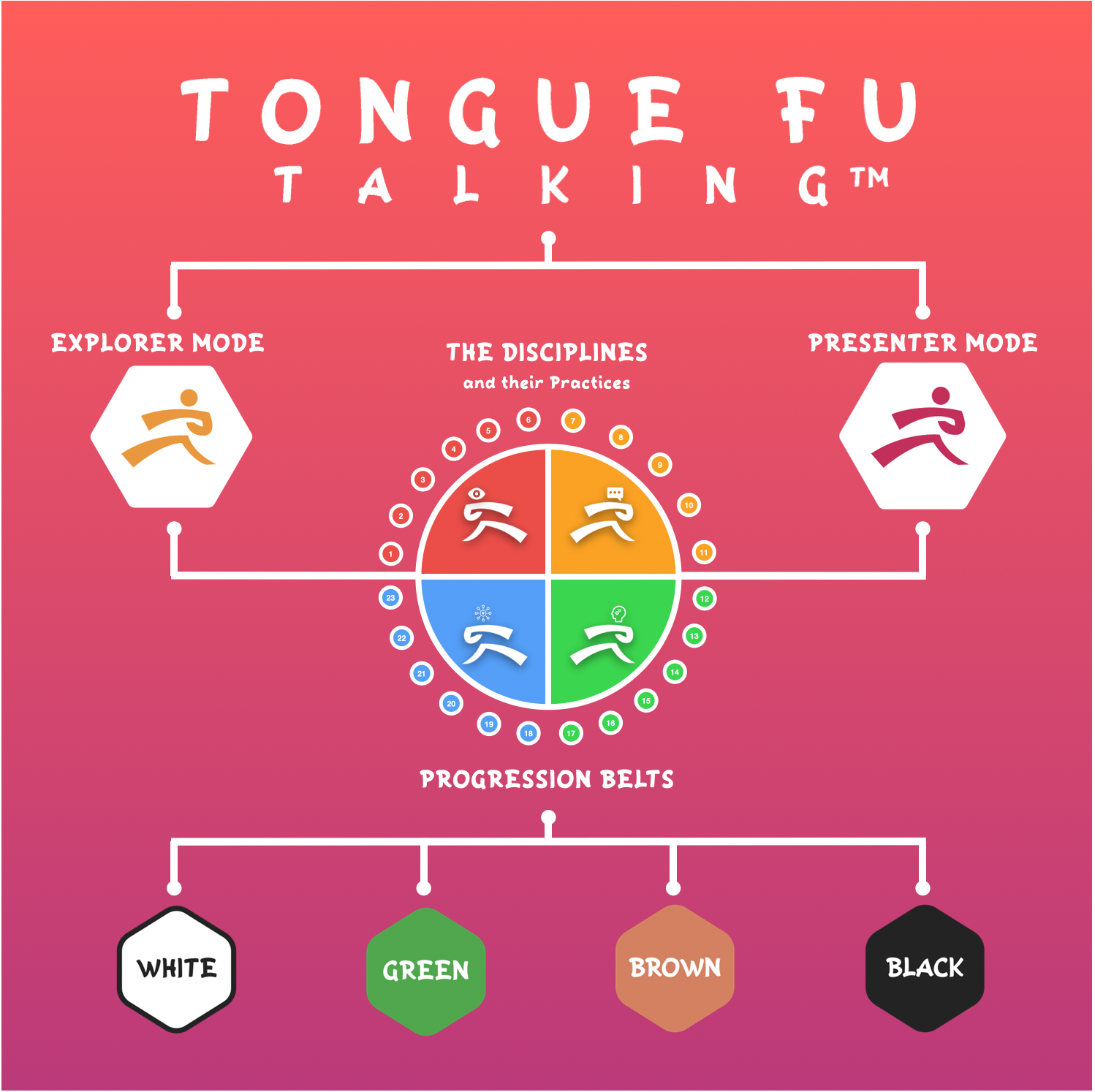
Classroom Integration and Resources
Tongue Fu Talking™ includes:
-
A whole-school oracy policy
-
CPD videos and slides for staff training
-
Printable classroom resources (mats, sentence stems, visual cues)
-
Assessment and reflection tools
-
Embedded links to speaking and listening in all subjects
This ensures that oracy is not an add-on but part of daily classroom life.
See Sample Resources
Visit tonguefutalking.chrisquigley.co.uk to download.
Subscribe
Subscribe now to access the full framework
FAQs & Answers
Q1. What is oracy and why is it important in education?
A1. Oracy is the disciplined art of speaking and listening: where thinking, language, expression, and collaboration come together to shape understanding and communication. It underpins reasoning, learning, and self-expression across all subjects. X (formerly Twitter)+10chrisquigley.co.uk+10chrisquigley.co.uk+10
Q2. What are the two modes of talk in Tongue Fu Talking™?
A2. Explorer Mode supports reasoning, discussion, and collaborative thinking; Presenter Mode fosters clarity, structure, and confidence when speaking publicly. chrisquigley.co.uk+4chrisquigley.co.uk+4chrisquigley.co.uk+4
Q3. What are the four disciplines within the framework?
A3. The four disciplines are: The Stance (physical presence), The Flow (linguistic fluency), The Mind (thinking and metacognition), and The Bond (social and emotional connection).chrisquigley.co.uk+3chrisquigley.co.uk+3chrisquigley.co.uk+3
Q4. How does the belt-based progression work?
A4. Progression is structured via belts—from White (EYFS/KS1) through Green (lower KS2) to Brown (upper KS2)—making oracy development visible and motivating. chrisquigley.co.uk+15chrisquigley.co.uk+15chrisquigley.co.uk+15
Q5. What resources are provided for teaching oracy systematically?
A5. The framework includes CPD videos and slides, printable classroom tools, assessment and reflection tools, sentence stems, and visual aids to embed oracy across the curriculum.
References
Alexander, R. (2020). A Dialogic Teaching Companion. London: Routledge.
Education Endowment Foundation (EEF). (2021). Oral Language Interventions. https://educationendowmentfoundation.org.uk/education-evidence/teaching-learning-toolkit/oral-language-interventions
Mercer, N., Hennessy, S., & Warwick, P. (2019). Dialogue, Thinking Together and Digital Technology in the Classroom: Some Educational Implications of a Continuing Line of Inquiry. International Journal of Educational Research, 97, 187-199.
Related articles



.png)
